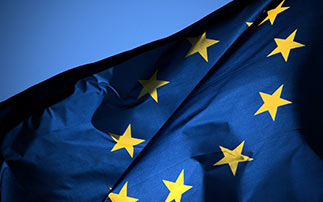Find out more about lump sum funding and the doubts about the expansion of this emerging funding method for the future of the Horizon Europe programme.

+33(0)1 42 54 60 64 | contact@welcomeurope.com

Find out more about lump sum funding and the doubts about the expansion of this emerging funding method for the future of the Horizon Europe programme.
The multiplication of information sessions and webinars by the national contact points on the occasion of the opening of the calls for lump sum projects in April and May 2022, illustrates the will of the European Commission (EC) to perpetuate this emerging funding method for the future of the Horizon Europe programme. But this daring gamble inevitably results in a wave of questions from project leaders. This article aims to examine the interest of lump sum funding for stakeholders and to analyse some of the doubts raised about its implementation.
This ambition to simplify is not new to the EC, which has proceeded in a similar way to facilitate access to the real cost system. Faced with the exhaustion of possibilities for simplifying real costs, the institution is setting up a pilot project introducing calls for lump sum funding under the Horizon 2020 programme. This funding takes the form of a global lump sum to cover one or more categories of expenses. In practice, the global sum allocated to the project is established in the grant agreement, this sum is then divided into shares allocated to each partner, for each Work Package (WP). The funds are paid out upon completion of the WPs, but the EC guarantees that the lump sum payment is not dependent on a positive outcome of the project and that it is sufficient to prove that the activities have been completed. Seemingly satisfied with the interim results of the pilot, the EC has decided to open about 20 lump sum calls for the Horizon Europe 2021/22 programming.
The main objectives of lump sum funding put forward by the EC are the following:
Lump sum funding breaks with traditional financing methods, despite a wide range of similarities with the standard approach: same evaluation criteria, same reporting schedule, etc. It is distinguished by the budgetary flexibility it provides to project leaders and the absence of EC intervention in the internal management of the project. An independence acquired by the supply of a budgetary table, specific to the lump sum project, which must include a detailed estimate of the costs for each participant and for each WP.
It is within this framework that the EC wants to impose lump sum funding as the reference for the years to come.With a simplified funding method that offers more flexibility to project leaders, the EC states in its Guide for Participants that lump sum projects will not be judged more severely than projects using actual costs.
The lack of technical and practical knowledge is one of the main sources of questioning. It will be several months before the completion of the Horizon 2020 pilot project and to confirm the reliability of the positive feedback put forward by the EC. This lack of visibility is reinforced by the absence of clear guidelines on the extent of lump sum funding in the 2023/24 programming. While problems of understanding are being addressed by the EC through extensive communication (“Lump sum funding: What do I need to know ?” / Guide to why the EC wants to use lump sum), this does not appear to be sufficient to address the uncertainties related to the viability and limited scope of lump sum funding.
To begin with, it should be noted that the grant comes at the pre-financing and WPs completion stages, which can be complicated for consortia lacking sufficient liquidity in a long-term project. At this stage, the lump sum funding concerns mainly the RIA, IA and CSA actions and calls for proposals with a limited number of topics, or even a single topic, which leads to question the adequacy of this funding method with large actions such as COFUND actions. The EC offers the possibility of dividing the WPs to match the reporting periods in order to solve the liquidity problems, but this does not seem to be sufficient.
Some aspects of the lump sum funding are at the heart of the debates: the low budget coverage, the expert evaluators undergoing training, the lack of concrete feedback from the pilot project or the purely theoretical aspect of the proposed solutions in case the WPs would not be completed at the end of the project. Beyond these functional aspects, the sources of concern relate to the negative consequences that this funding method may entail
In response to these doubts, the EC points out that there have been no adverse effects to date. Willing to collect the different observations in order to ensure the progress of the lump sum funding that is still in progress, the EC specifies that it is necessary to launch calls for proposals in the form of lump sums, without delay, in order to analyse the possible shortcomings and to recalibrate in an enlightened way this mode of funding. All in all, a better visibility will already be possible at the end of the pilot calls for proposals and with the first feedback from the lump sum calls for proposals of April and May 2022. A special webinar for participants will be held on May 19, 2022.
The prospect of the European Commission and stakeholders working together to bring lump sum funding to its full potential is encouraging. However, as things stand, it seems ambitious to try to make lump sums a democratised form of funding suitable for all kinds of projects in the years to come. Project leaders are not fundamentally opposed to this new funding perspective, but it will take time for it to become the reference.
Imane Mouchi

